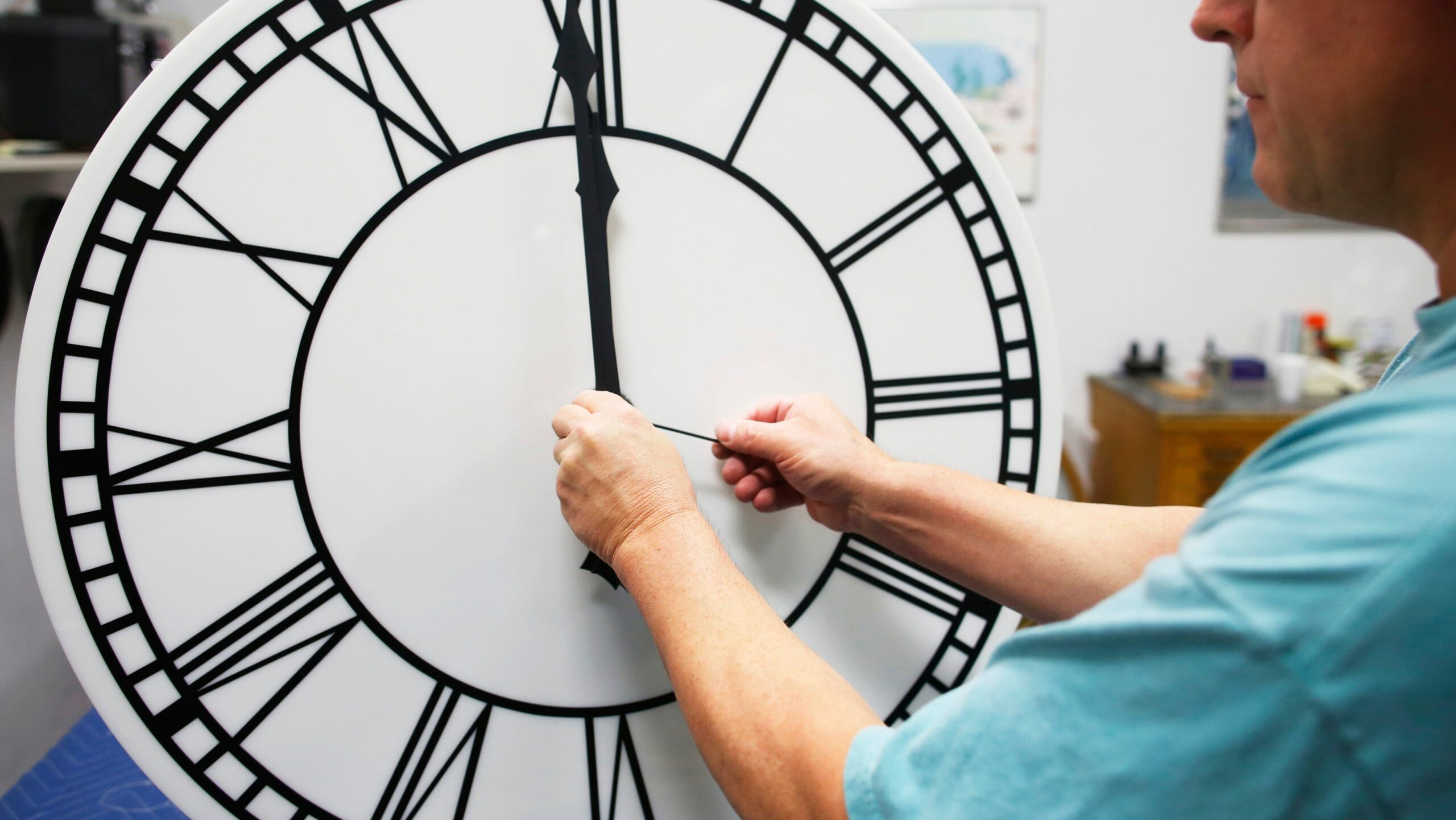The end of daylight saving time will be here before you know it, meaning the majority of Americans will gain an extra hour of sleep in a few months as the clocks fall back.
Daylight saving time began this year in March, when millions of Americans lost an hour of sleep by setting their clocks forward an hour, part of the twice-annual tradition to add more daylight to the mornings or evenings.
The time adjustment affects the daily lives of hundreds of millions of Americans by prompting clock changes, contributing to less sleep and changing the schedules for children and pets in the days following.
Here’s everything you need to know about of the end of daylight saving time in 2024.
A dog on daylight saving time: ‘I know when it’s dinner time. Stop messing with me.’
What is daylight saving time?
Daylight saving time is the time between March and November when most Americans adjust their clocks ahead by one hour.
We gain an hour in November (as opposed to losing an hour in the spring) to make for more daylight in the winter mornings. When we “spring forward” in March, it’s to add more daylight in the evenings. In the Northern Hemisphere, the autumnal equinox is Sunday, Sept. 22, marking the start of the fall season.
When did daylight saving time start in 2024?
Daylight saving time began in 2024 on Sunday, March 10 at 2 a.m. local time, when our clocks moved forward an hour, part of the twice-annual time change that affects most, but not all, Americans.
When does daylight saving time end in 2024?
Daylight saving time will end for the year at 2 a.m. local time on Sunday, Nov. 3, when we “fall back” and gain an extra hour of sleep.
Next year, it will begin again on Sunday, March 9, 2025.
Is daylight saving time ending permanently?
The push to stop changing clocks was put before Congress in the last couple of years, when the U.S. Senate unanimously approved the Sunshine Protection Act in 2022, a bill to make daylight saving time permanent.
Although the Sunshine Protection Act was passed unanimously by the Senate in 2022, it did not pass in the U.S. House of Representatives and was not signed into law by President Joe Biden.
A 2023 version of the act remained idle in Congress as well.
Does every state observe daylight saving time?
Not all states and U.S. territories participate in daylight saving time.
Hawaii and most of Arizona do not observe daylight saving time. Because of its desert climate, Arizona doesn’t follow daylight saving time (with the exception of the Navajo Nation). After most of the U.S. adopted the Uniform Time Act, the state figured that there wasn’t a good reason to adjust clocks to make sunset occur an hour later during the hottest months of the year.
There are also five other U.S. territories that do not participate, either:
The Navajo Nation, located in parts of Arizona, Utah, and New Mexico, does follow daylight saving time.
Hawaii is the other state that does not observe daylight saving time. Because of its proximity to the equator, there is not a lot of variance between hours of daylight during the year.




